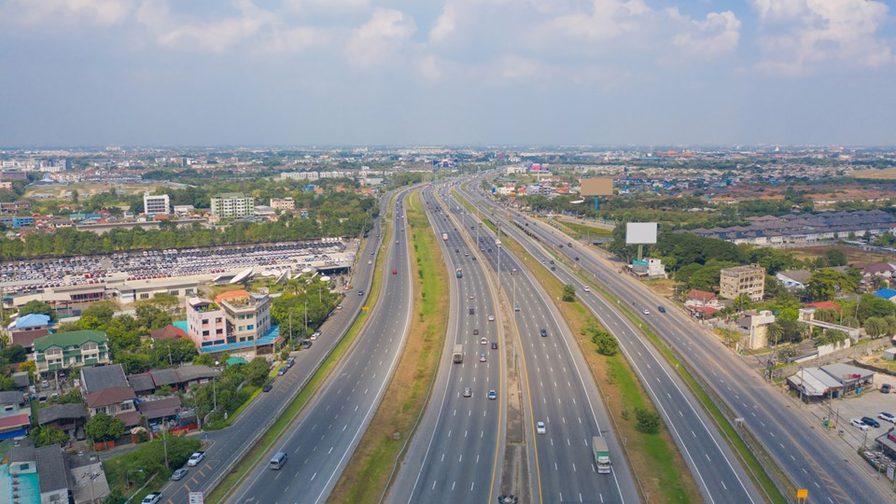What opportunities lie ahead for ASEAN following the upgraded FTA with China?
Chinese investment is key to achieving high-tech development.

Originally published in The Business Times.
A significant milestone for ASEAN and China’s trade relations was achieved in October last year with the substantial conclusion to the ASEAN-China Free Trade Area (ACFTA) 3.0 negotiations, marking a redefinition of economic collaboration in these markets.
ASEAN and China have been each other’s largest trading partner for years, with trade between them expected to achieve a compound annual growth rate (CAGR) of 6.6 per cent and outpace the global CAGR average of 5 per cent, according to our Future of Trade report.
The trade in intermediate goods alone has been rapidly growing at over 10 per cent yearly, an indication that enterprises in China are increasingly relocating its production capacity to the 10-member bloc.
Amid rising protectionism and escalating trade tensions, companies are expected to continue diversifying their manufacturing capacities – from apparel and electronics to clean energy and electric vehicles – to other markets.
ASEAN is well placed to capture these strategic opportunities to ascend the global value chain and accentuate its position as a key supply chain hub. We see huge potential in ACFTA 3.0 helping ASEAN to achieve these goals.
Riding on Chinese investments for achieving high-tech development
ASEAN boasts a young population with vast consumer markets and geographical advantages, which are key ingredients to boosting their manufacturing capacities and enabling them to thrive in an increasingly interconnected world.
The full implementation of ACFTA 3.0 will lower barriers for Chinese enterprises to access ASEAN markets, facilitate increased interoperability and reduce operational costs, ultimately establishing a more robust and resilient supply chain across these markets.
Furthermore, rising investments from China would accelerate ASEAN’s journey to becoming a global leader in innovation and value creation.
We’ve seen a surge in foreign direct investment (FDI) inflows from China from USD4 billion in 2010 to a record-breaking USD17 billion in 2023. This is coupled with a shifting industrial investment pattern from the finance and insurance industry to manufacturing and wholesale and retail trade in recent years, highlighting the new focus on e-commerce, telecommunications and the digital economy.
As ASEAN’s FDI inflows are expected to continue reaching unprecedented levels in the medium term, this could propel the region’s technological development of emerging industries such as the digital economy and green economy, and increase the value added by its industries and reduce reliance on traditional labour-intensive sectors.
Mutual recognition of standards critical for integration
Another key to ensuring supply chain resilience and stability within the region would be the alignment of standards – also a key outcome of ACFTA 3.0. This harmonisation could unlock the full potential of Southeast Asia’s USD300 billion green economy by 2030, transforming industries such as power, transport and building, according to the Southeast Asia’s Green Economy report.
In recent years, ASEAN has made strides in sustainable finance taxonomies developed at both regional and market levels, paving the way for a greener future.
The recent inclusion of Singapore’s taxonomy into the Multi-Jurisdiction Common Ground Taxonomy is a significant milestone and will set the stage for attracting greater investments between China and ASEAN. This would build on the success over the past three years through the issuance of 340 green bonds in China, aligned with European standards.
As a connector bank with presence in China for more than 166 years, as well as operations in all 10 ASEAN markets, we are uniquely positioned to help our clients tap into our strong cross-border network and expertise to capture opportunities in these markets.
Shared prosperity for two billion people and more
The deepening integration of supply chains between ASEAN and China will not only drive economic growth, it will also nurture the next generation of talent in emerging and high-tech industries, especially for people below the age of 35, who represent more than a third of ASEAN’s population.
All in all, the full implementation of ACFTA 3.0 will help shape a brighter and more equitable future for over two billion people across these markets and beyond. It has the potential to uplift living standards, foster greater mobility and catalyse the exchange of ideas, innovation and capital flows.
This future is now unfolding, and we remain steadfast in our commitment to driving this transformation and unlocking the full potential of ASEAN and China trade with our clients, peers and partners.
Jean Lu is Standard Chartered Bank’s CEO for China and Executive Vice Chairperson of the Board of Standard Chartered Bank (China) Limited.
Explore our insights
What it takes to build a low-carbon steel corridor
The Middle East and Europe are shaping a low-carbon steel corridor. Explore what businesses need to turn this cr…